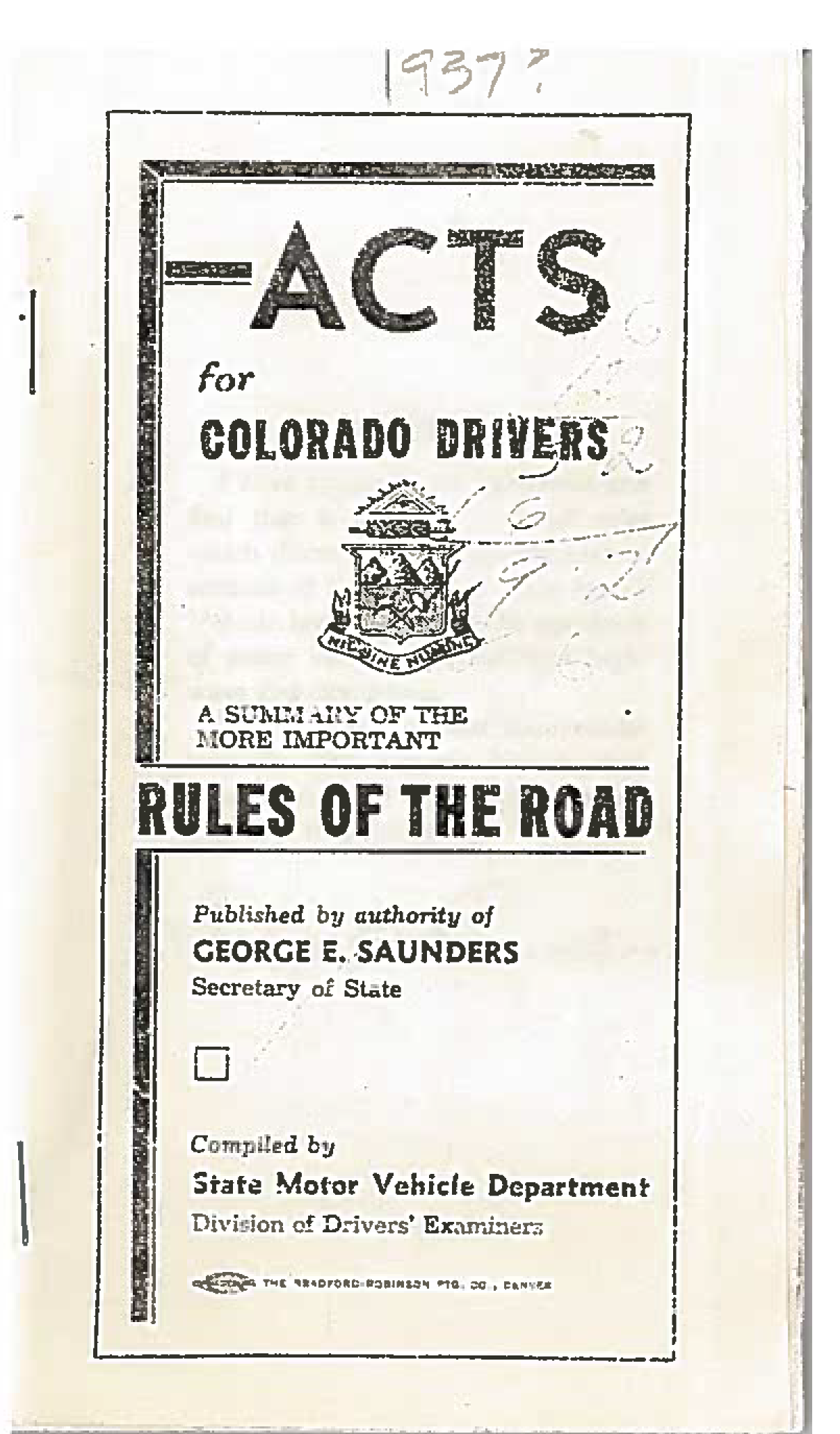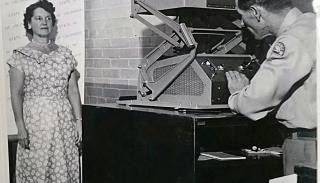
Story
By Design
As Colorado prepares to release a new design for our driver licenses, we look back at why these cards became ubiquitous accessories.
As you read this, there’s a good chance that you have a driver license or ID card somewhere in a purse, pocket, or wallet issued by the Colorado Department of Revenue. Think about how often this is used in your daily life. It allows you to travel on airplanes, see concerts and sporting events, and grants you entry into bars and other establishments. In essence, these cards are an extension of who we are.
Though they are made of plastic, they are living documents that encapsulate many of life’s milestones as we change addresses and grow older. Each one is unique and represents the identities of millions of Coloradans, not just in terms of essential information, but our hopes and desires as well.
While they are nearly universal now, this wasn’t always the case. The evolution of identity documents and licensing in the United States reflects a nation reckoning with the needs born from a technological explosion and resulting in the creation of regulations we are familiar with today.
That innovation? The automobile.
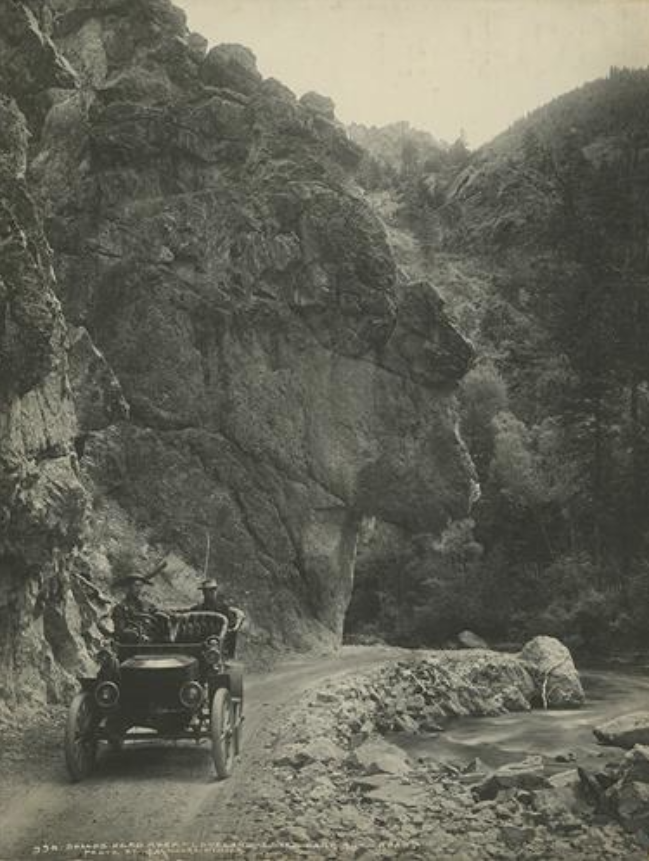
An automobile drives on Estes Park River Road in the early 1900s.
Cars on the Road
We may take it for granted now, but driving in America at the beginning of the twentieth century was an unregulated—and oftentimes dangerous—practice. The introduction of the Ford Model T in late 1908 is often credited as an industrial turning point, transforming the perception of automobiles as extravagant novelties into relatively affordable commodities.
At the time, laws and regulations had not yet caught up to this new technology. Cars and drivers were flooding roads, but rules and guidelines wouldn’t be established for several more years. Even something as commonplace as speed limits weren’t standard in Colorado until 1921.
Apparently, in the absence of speed limits, early drivers were burning up the roads. The Palisade Tribune reported on September 14, 1917, that Secretary of State James R. Noland had issued “Ironclad and brassbound orders that the speed maniac be put out of business pronto.” Measures like these were some of the first steps towards keeping motorists safe. By January 1936, a valid license—which set the driver back $1 and was valid for three years—was required to operate a motor vehicle in Colorado.
The Paperwork Evolves
The necessity of automobile regulations in the early twentieth century coincides with the evolution of birth certificates in the United States. Though a birth certificate is of critical importance today, the concept of recording and preserving statistics was an impracticality for most Americans at that time. The infrastructure to store this information had not yet been created and both patients and physicians alike found the process of logging statistics time-consuming and unnecessary.
In 1900, only about 40 percent of Americans had their deaths recorded. By 1925, that number had increased to 88 percent. The American Medical Association began championing the mission of record-keeping by publishing the pamphlet Why Should Births and Deaths Be Registered in numerous revised editions in the 1910s and 1920s, which emphasized the need for data from a public health perspective. The passage of the Social Security Act of 1935 and the dawn of World War II underscored the importance and provided resonating examples for Americans: In order to receive benefits or enlist, the identity of an individual needed to be established. By 1950, the Census Bureau had registered an estimated 97.9 percent of all births in the country.
Streamlining Security
With the responsibility of licensing falling onto individual states, there was a lack of consistency regarding how information was presented on credentials. Prior to the 1970s, many states didn’t even require a photograph on licenses. A person’s Social Security Number—personal data considered to be extremely sensitive today—was featured on Colorado driver licenses up until 2005.
A greater emphasis was placed on the importance of driver licenses and IDs with the passage of the National Minimum Drinking Age Act of 1984, which required that all states raise the minimum age for drinking or purchasing alcohol to twenty-one. Failure to comply would result in a 10 percent reduction of highway funds under the Federal Highway Aid Act. Since eighteen was the legal drinking age in some states (including Colorado for beer with 3.2 percent alcohol by volume), this sudden change created a demand for forged credentials. In order to combat the rise of illegal fake IDs, new security features were added to cards to certify authenticity, such as the introduction of UV laminates on Colorado licenses in 2002.
Organ Donation
In the mid-1970s, Colorado Driver License Offices began implementing measures that would have tangible impacts not only for the driver, but for fellow Coloradans. In 1976, customers could ask to become organ donors. In 1990, Colorado Division of Motor Vehicles (DMV) technicians began asking customers if they would like to become organ donors during their appointments. As a result, Colorado had the distinction of being the state with the highest number of registered organ donors in 2018; more than 69 percent of Coloradans said “yes” to becoming an organ, eye, or tissue donor, surpassing the national average of 49 percent. A record 622 life-saving transplants were performed in Colorado in 2020 thanks to the generosity of donors.
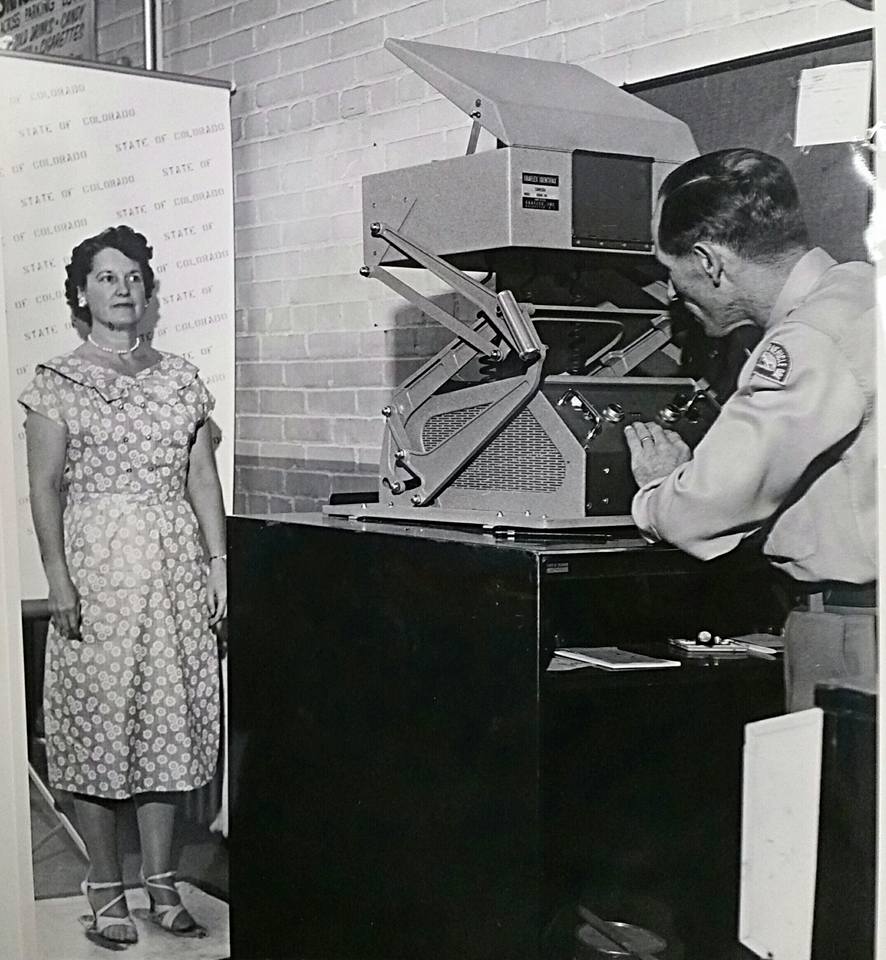
A woman poses while a photographer takes her photograph as a Denver branch of the Division of Motor Vehicles in 1946.
Real ID
In the wake of the attacks on September 11, 2001, there was increased attention directed to the authenticity and regulation of driver licenses and IDs. Passed in 2005, the Real ID Act was created “to establish and rapidly implement regulations for state driver's license and identification document security standards, [and] to prevent terrorists from abusing the asylum laws of the United States.” Those national regulations included the requirement of a full name, date of birth, unique identifying number, and front-facing photograph on all compliant IDs.
Its passage was not without its share of controversy, and it faced legal challenges, early opposition from states, and frequent postponements. Despite this, Colorado was one of the first thirteen states approved by the Department of Homeland Security as having the necessary data requirements for Real ID certification. As of 2021, all fifty states and the District of Columbia have been deemed compliant. Good thing: beginning May 3, 2023, all United States travelers will need Real ID-compliant documentation to board domestic flights and enter certain federal facilities.
Accurate Representations
Within the last decade, efforts have been made in Colorado to represent its citizens more accurately on driver licenses and IDs. On May 10, 2013, Colorado House Bill 1119 passed, which authorizes the inclusion of veteran status on applicable licenses and IDs in an attempt to make accessing benefits and discounts easier. As of 2021, all fifty states (as well as Washington, DC, and Puerto Rico) offer veteran status designation.
Oregon made history on July 1, 2017, becoming the first state in the country to offer a non-binary “X” as a gender identifyer on all driver licenses and IDs. Colorado followed shortly thereafter on November 30, 2018, becoming one of twenty-one states (as well as Washington, DC) that allows a similar distinction as of 2022.
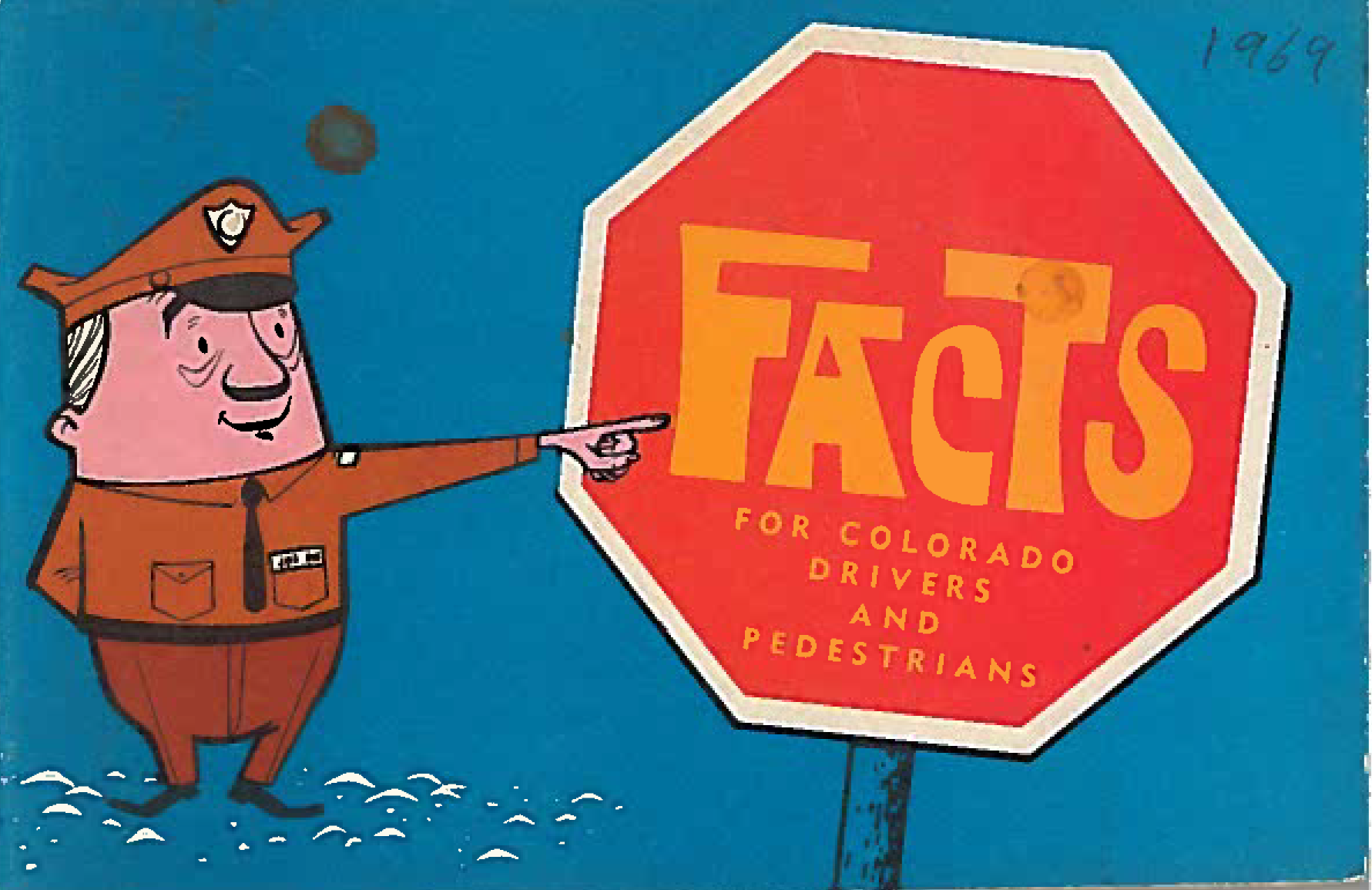
"Facts for Colorado Drivers and Pedestrians." Colorado drivers' manual from 1969.
Iconic Colorado
The Colorado Division of Motor Vehicles launched the ambitious Iconic Colorado contest on August 17, 2020, in an attempt to transform the traditional plastic ID into a bold and dynamic work of art. Local Colorado artists were encouraged to submit photographs, paintings, drawings, and more depicting an indelible landmark of our state. Governor Jared Polis remarked at the time: “Our identification cards and driver licenses are the one thing that we all carry around almost everywhere we go. These cards that most of us carry around are the single most present piece of art and represent our identity and the great state that we call home. These cards should be beautiful, a credit to our state, and a point of pride for all Coloradans and to make that happen we need help from our deep pool of talented creators.”
More than 400 entries were received and after a statewide voting process, the winners were chosen. Matt Nunez’s photograph of Mount Sneffels, located in the San Juan Mountain Range, was selected as the front image, while Gabriel Dupon’s photograph of Sprague Lake in Rocky Mountain National Park was chosen for the back. The revamped credentials are expected to be made available to Coloradans in early March 2022.
So, what will IDs look like in the future? Already, the driver license has been subject to digital transformation: You can now store a digital copy of your ID on myColorado, the State of Colorado’s official smartphone app. The DMV is also on the forefront of launching credentials compatible with emerging technologies. The top subject matter experts around the globe have worked together to create Mobile Driver License (mDL) Standards that establish the groundwork for secure, effective and interoperable mDL solutions worldwide.
With the rise of smartphones and social media, documenting everyday life has never been easier or more prevalent. We have an innate desire to capture ourselves in an attempt to differentiate our identities from others, to say “this is who I am.” No longer confined to a static, plastic card, digital IDs and online DMV services suggest exciting new possibilities—growing and adapting with us in real time.
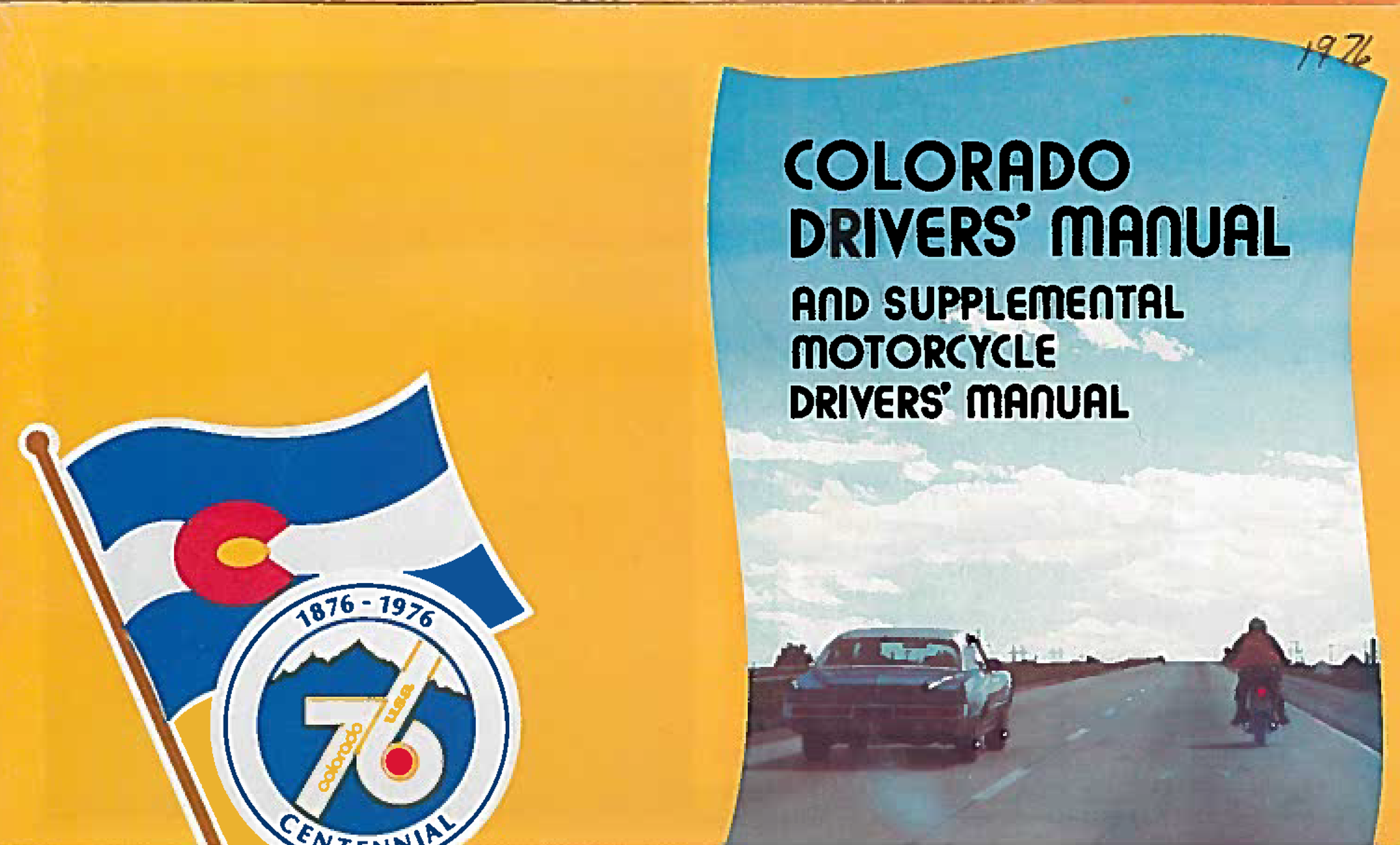
"Colorado Drivers' Manual." Manual for Colorado drivers from 1976.
Take Note
1936 Twenty-three years after Colorado began licensing automobiles, a valid license is required to operate a motor vehicle in Colorado. The cost is $1 and the document is valid for three years.
1940 A thumbprint is required to receive a license.
1990 DMV technicians begin asking customers if they would like to become organ donors during their appointments.
2002 All documents issued have UV laminate.
2006 A new gender reassignment form and procedures are introduced. Most licenses cost $15.60.
2019 Drivers can store a Digital ID in the myColorado app.
2022 Colorado will issue a new license design.

